It’s been 44 years since the last Scout model rolled off the assembly line. But the reborn brand made its debut Thursday night, outlining plans to return with a pair of off-road-ready light trucks and a mix of all-electric and “range-extending” drivetrains. Potential buyers now can plunk down a deposit – but they’ll have to wait until 2027 to take delivery.
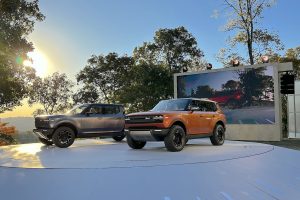
Scout officials revealed their first two all-electric offerings: the Terra pickup (left) and Traveler SUV.
Originally introduced by International Harvester in 1960, Scout was one of the first brands to offer sport-utility vehicles, directly competing against the likes of Jeep, as well as the original Ford Bronco. But its parent struggled to survive, eventually reemerging as Navistar.
The Scout brand was pulled from the market in 1980 – ironically, just before the real surge in demand for SUVs began.
Now, with utility vehicles dominating the U.S. market, Scout is set to make a return, albeit this time as part of the vast Volkswagen AG empire. The German manufacturer purchased rights to the Scout name in 2022 and, on Thursday evening, revealed to the world what it’s been working on since then.
It took the wraps off what will be the brand’s first two product lines, the Terra pickup and Traveler SUV. And, much like the original Scout family, these are rugged, body-on-frame models capable of serious off-roading. But there’s one big difference: Scout is going electric, with both all-electric and range-extending drivetrains.
Here’s what we know
First off, it’s important to point out that the first Scout models won’t reach showrooms until sometime in 2027. And for now, quite a few details have yet to be worked out, including finally vehicles specs. But Scout has confirmed that the brand will launch with two products, the Terra pickup and Traveler SUV.
Unlike the majority of today’s utility vehicles — which have migrated to car-like unibody designs, the two Scout models will stick with truck-like body-on-frame platforms, with sold rear axles and both front and rear mechanically locking differentials.
“The original core idea — rugged, versatile vehicles capable of off-road adventure and family duty — is more relevant than ever,” said Scout Motors CEO Scott Keogh.
Terra will feature a 5.5-foot bed and come with twin 120-volt outlets, as well as a 240V plug. Traveler will get a split tailgate. The pickup will be capable of towing up to 10,000 pounds with a 2,000-lb payload capacity. The SUV will be rated at 7,000 pounds towing, Scout said.
In deep water
The demand for vehicles capable of handling at least moderate off-road trails has increased dramatically in recent years — partly driven by COVID isolation. We’ve seen the emergence of ruggedized sub-brands, such as Subaru Wilderness, as well as the return of Ford’s Bronco family.
The automaker promises that Terra and Traveler will offer “competitive approach and departure angles, and robust suspension options.” Like Bronco, expect to see a mix of capabilities, depending upon the trim package.
At the extreme, Scout products will be able to ride on up to 35-inch tires, and will deliver “over” 1 foot of ground clearance, with “nearly” 3 feet of water fording capabilities. There’ll be front and rear locking differentials, disconnecting sway bars, and electronic controls allowing motorists to adjust a variety of vehicle settings with just the touch of a button.
Going electric
From the beginning, VW said the Scout brand would go all-electric. That’s largely true, though it has modified its plans slightly, reflecting changing market demands and consumer concerns. It now will offer two “electrified” powertrain approaches.
Both models will be available in all-electric form. And insiders hint that Scout will feature different configurations offering one or more electric motors — much in line with the approach Rivian and Tesla are taking with products like the R1T and Cybertruck, respectively.
While the company has yet to release full specs, it is betting that potential buyers will be drawn to the off-road benefits of battery drivetrains. Electric motors deliver maximum torque the moment they start spinning – which is great for dealing with obstacles like tree trunks and boulders.
Range-extender
Scout has yet to release full specs — largely because it’s yet to complete development work. But, in a news release it noted ts fully-electric vehicles “are targeted to climb 100% grades and accelerate 0-60 mph in as quick as 3.5 seconds made possible by an estimated nearly 1,000 lb-ft. of torque.”
Pure EV models are target to yield 350 miles per charge. That’s better than either the current Ford F-150 Lightning or the Tesla Cybertruck, though not quite a match for some versions of the Chevrolet Silverado EV or Rivian’s R1T pickup and R1S SUV. And that’s something that concerned Scout planners. To sidestep “range anxiety,” they’ve decided to add a second electrified drivetrain technology. Alternatively known as a “serial hybrid, or “range-extended energy system,” it pairs a gasoline engine with the battery drive.
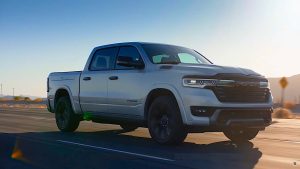
Scout will now offer a range-extender option, much like the Ram brand’s Ramcharger — shown here — to deliver improved range.
The internal combustion engine, dubbed Harvester, will serve solely as a generator to recharge the batteries when they start to drain. But, at all times, the wheels will be driven solely by the vehicle’s electric motor or motors. This approach, according to Scout, will boost range to 500 miles and allow a motorist to keep going simply by filling up the fuel tank. No immediate need to find a charger.
With both drivetrain systems, Terra and Traveler, Scout has developed an 800-volt electrical architecture that is capable of drawing up to 350 kW of power from a public charger, That will allow them to recharge their packs much faster than current Volkswagen EVs. The two models, meanwhile, will migrate to the NACS charger system, allowing them to plug into Tesla’s Supercharger network.
More Scout News
- Scout Breaks Ground for $2B South Carolina Assembly Plant
- VW Deal With Rivian Won’t Derail Scout Launch
- Magna Steyr Tapped to Help Develop Scout
Back from the dead
Scout was originally introduced by International Harvester in November 1960 and soon became that brand’s best-selling product line. But it was ahead of its time, SUVs then targeted at a relatively narrow niche of buyers. The nameplate was pulled from the market in 1980.
It was an unfortunate misjudgment. The early ‘80s brought explosive growth of the utility vehicle market. But International Harvester was struggling and simply couldn’t afford to feed the Scout line, ceding the market to competitors like Jeep and Ford.
It ultimately collapsed and survived only be joining forces as part of the newly formed Navistar which put its focus on full-size trucks and buses. The Volkswagen Group purchased the rights to the Scout name two years ago.
Scout appears to fit in with Volkswagen’s plans in a number of ways. The automaker aims to dominate global EV market, with a planned investment of more than $100 billion. At the same time, it has been pushing to build a bigger presence in the U.S. market, where it has long lagged its performance in Europe, China and Latin America.
“We couldn’t be prouder to revitalize this iconic American brand, create thousands of American jobs, and put American ingenuity back to work,” said Keogh.
Will it pay off?
There’s no question that demand for pickups and SUVs — including serious off-road models — has risen sharply over the past several decades. Utility vehicles now make up a solid majority of U.S. new vehicle sales. Pickups, meanwhile, have averaged 16.8% of the market between 2000 and 2024, according to data from S&P Global Mobility.
Over the last five years, that’s jumped to an average 19% and, said Stephanie Brinley, S&P’s principal auto analyst, “Our forecast shows an average … market share of 18.5% for the next 10 years.”
But EVs are another matter. In the pickup segment there are relatively few, including the Tesla Cybertruck, Ford F-150 Lightning, Rivian R1T and Chevrolet Silverado EV. And collectively sales didn’t even reach 50,000 during the third quarter. But the number of products is growing fast. The question, said Brinley, is whether the overall pickup segment will grow enough to absorb them all. The same is true in the SUV market.
“I think there’s an opportunity” for Scout, she told Headlight.News. Ironically, it could work to the reborn brand’s advantage waiting until 2027 before it goes on sale. “By then,” Brinley added, “we should have a better (public charging) infrastructure, and a better consumer experience, so there would be much better market acceptance” of EVs.
Pricing and availability
Scout plans to produce Terra and Traveler at a new assembly plant in South Carolina. The facility will have the capacity to produce up to 250,000 vehicles annually.
Even Scout insiders acknowledged on background that it would take time to fully utilize that capacity — under the best circumstances. Some observers are wondering whether parent VW might try to boost capacity utilization by adding products for some of its other brands, at least in the short-term.
At launch, plans call for the two Scout models to start at “under $60,000.” By producing them in the U.S. they should qualify for at least some U.S. tax credits that could lower the cost to near $50,000, Scout noted.
The first vehicles won’t reach showrooms until 2027. But buyers now can put down $100 fully refundable reservations at www.scoutmotors.com.

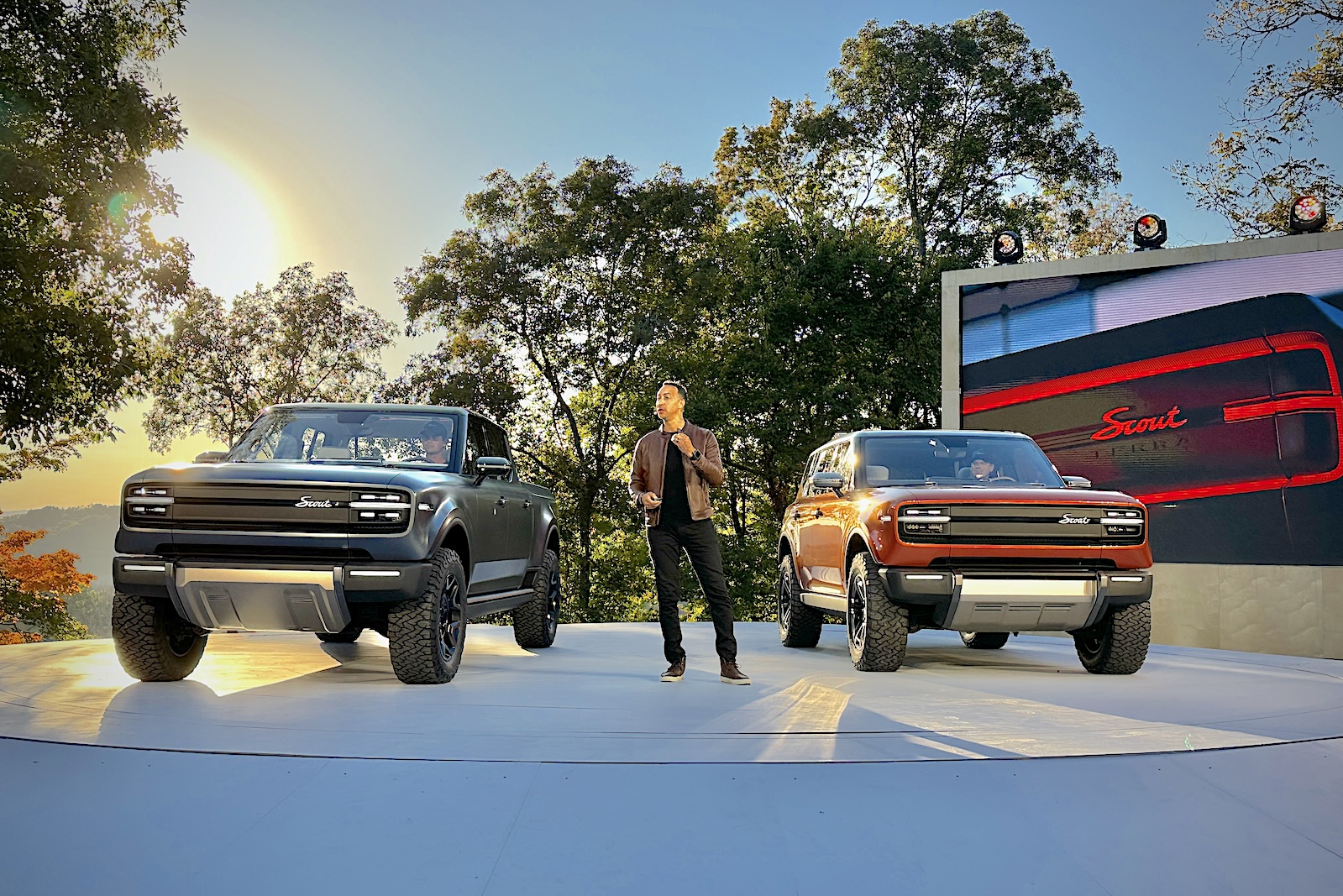
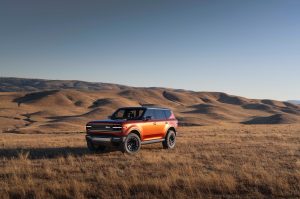
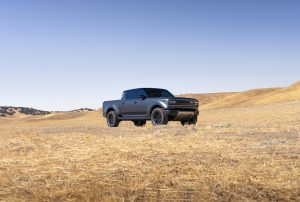

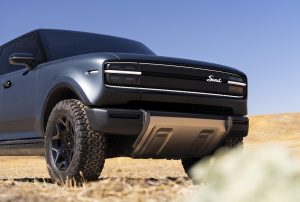


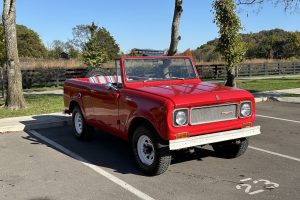


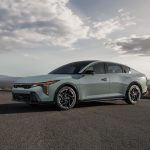
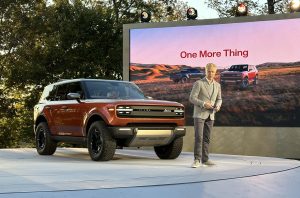
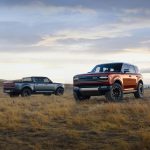



0 Comments